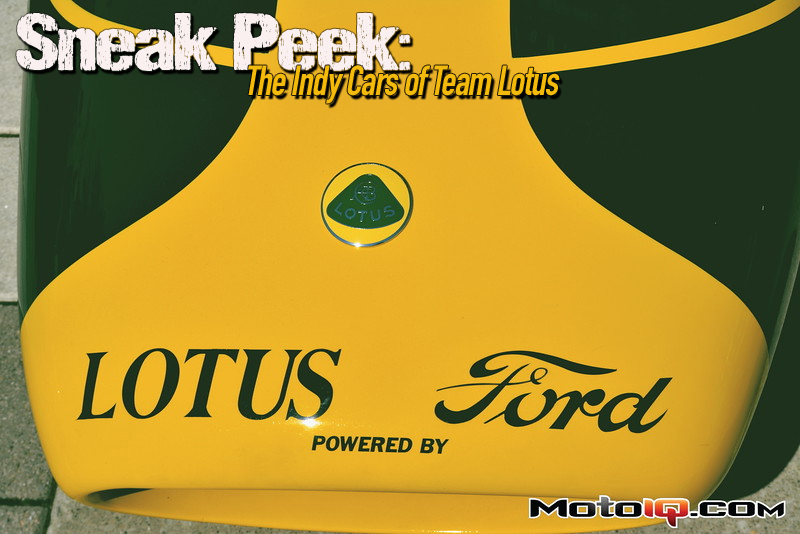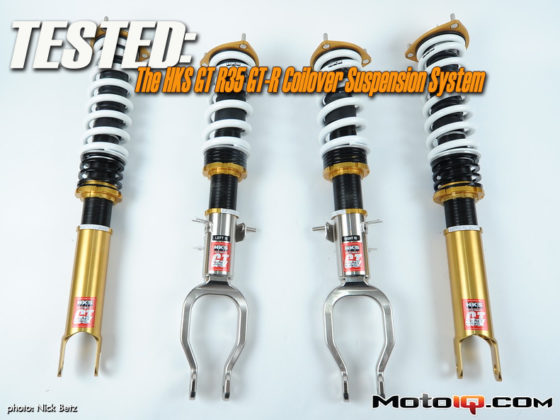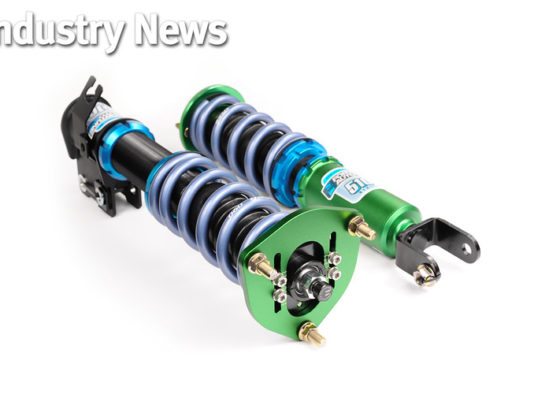,

The suspension front and rear was nearly identical to the 29. Once agan a ZF transmission was used (you can see the outer edge of the mounting bulkhead for the suspension pickups here). Here we can get a view of the 13” solid brake rotor, the 2-piston caliper, and the upright. Also take a look at the soft brake line. It’s rubber only with no stainless steel sheath.

Once again, the 34’s suspension was offset. The reasoning was with the weight set further to the left, weight transfer to the outer tires would be reduced, improving tire wear. For many years teams only changed right side tires, as the left side tires rarely saw wear. Even into the 80s, teams would never change the left front tire unless a car spun and did not crash (ala Danny Sullivan in 1985). The rectifier for the charging system can be seen mounted to the left of the rollhoop, where cool air can easily reach it. Speaking of the rollbar, the supports are actually bolted to the engine block. How 1960’s tech inspections saw that as legal is astonishing, but it was certainly light weight!

The exhaust manifold is an absolute work of art, braced with a delicate looking chromed truss of tubework. It’s a shame these cars were only set out for display, we would have loved to hear them wail around the track once more. In 1964, Jim Clark put his Lotus 34 on pole, looking to run away with the race and take his first win. Instead his Dunlop tires could not handle the track surface and the left rear failed, damaging his suspension. For safety’s sake, Colin Chapman parked the second 34 driven again by Dan Gurney. The 1964 race is sadly best known for being the race that claimed Eddie Sachs and Dave MacDonald in a fiery crash on the second lap. MacDonald was driving another rear engine car, this one built by hotrod legend Mickey Thompson.

As we were drooling over the 29 and 34, the IMS museum surprised the fans, with not one but two Lotus 38s, the car that would put the nail in the coffin of the front engine roadster. This car, in the classic yellow and British Racing Green Lotus livery is the very car Jim Clark used to win the 1965 500! It is currently owned by the Henry Ford Museum and was on loan to the Speedway. Fellow Scottsman Dario Franchitti got to live out his dream in 2010 by driving this car at speed around Indy. Later we discovered the museum was running an exhibit on Jim Clark commemorating the 50th anniversary of his 500 win. This car was restored from the ground up by Classic Team Lotus for the 2010 Goodwood Festival of Speed. CTL is run by Colin Chapman’s sons and they work out of the same workshops team Lotus worked in during their hayday, employing many mechanics from Lotus’s glory years. The museum also brought out Clark’s 1966 car, painted in bright STP orange. (Side note, someone should have told that track worker never to push on the control arm of a racecar!)

By 1965, Ford had tuned their engine up to 495 hp, making the 38 nigh uncatchable. Improvements taken from F1 and the 29 and 34 made the chassis even faster. Colin Chapman, ever the grand schemer took the lessons of the past two years and improved everywhere he could. Not only was the new car even faster, but Chapman hired NASCAR guru Leonard Wood to oversee the pitstops. Despite the clever pneumatic lift, the Lotus team's pitstops were still sloppy and slower than Chapman would have liked (in fact with better pit work in 1963, Lotus could have won the race). The Wood Brothers had the fastest pit stops in NASCAR and Chapman wanted that speed in his cars. With Jim Clark behind the wheel, there was no way his cars could lose in 1965.




1 comment
It was NOT Parnelli Jones who convinced Colin Chapman to design the Lotus 29. It was Dan Gurney.